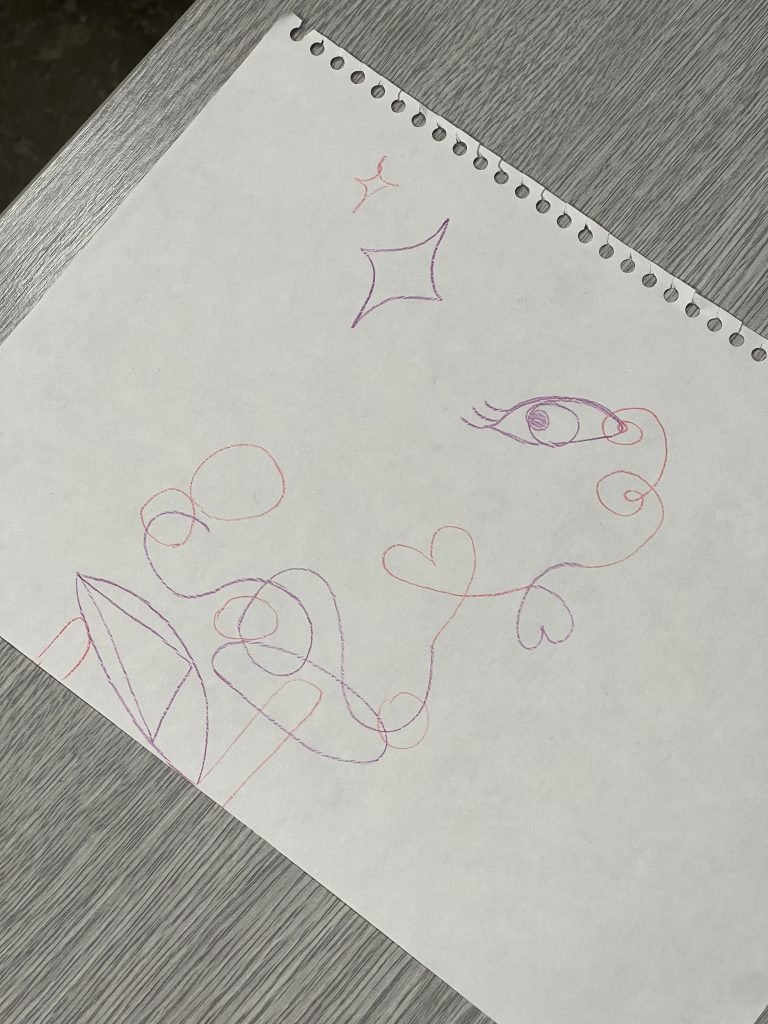On Friday our group met together with an art therapist for a two-hour art therapy session that focused on the following:
- We were introduced to art therapy through simple drawings, expressed hyper-verbally;
Since this was the first time our group had been exposed to art therapy, the therapist had us draw the basic “sun, moon, tree and freehand”. This was not only a way for us to learn about the art therapy process, but it also clarified some of the misconceptions that the general public has always had about art therapy.
For example: the art therapist is not able to judge the psychological state of the visitor and what he/she wants to express directly from his/her drawings, but has to make a basic judgement in combination with guiding the visitor in describing and interpreting the drawings.
We also did some fun two-person collaborative drawings, which started because we were talking about how electronic technology has limited people’s communication, resulting in a lot of people nowadays putting down their mobile phones when they are chatting face-to-face and not knowing where to start the conversation. So the therapist asked us to work in pairs, but not to communicate with each other, only to exchange ideas through drawing. We were surprised to find that even without saying a word, communication between two people could become very interesting.

(The image above is a collaborative painting between Ujeong and I. Ujeong is in red and I am in purple)
2. Understand the topic of our project and answer it.
What we learnt from the interviews:
a.Art therapists generally don’t have a very permanent place of work; they may work from home, or they may travel to different schools and communities, they need to travel to and from their employers, and they need to go to seminars and workshops.
b. There is a mismatch between the number of art therapists and the market demand. Nicky said that there are many visitors who feel uncomfortable in their mind may have to wait on the waiting list for half a year before they can see a professional art therapist, but half a year may be a missed opportunity for the best treatment for the patients with mental illness.
c.Nicky discovered that online therapy might be better than offline therapy for some patients. This discovery stems from the fact that during the epidemic, art therapy was forced to switch to online due to the closure of the city where everyone was confined to their homes, at first Nicky expressed discomfort, but over time it seems that not only does online therapy save art therapists time travelling to and from their employers, but it also works well for some of the visitors.
d.Ai’s co-creation of the children’s drawings helps the art therapist to interpret the children’s drawings.
